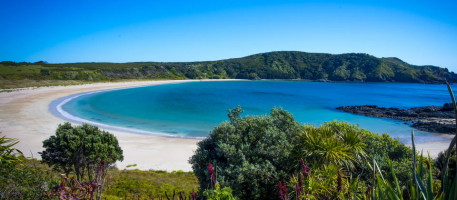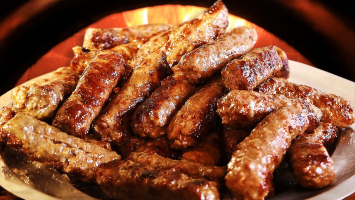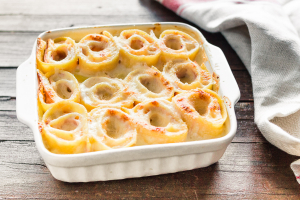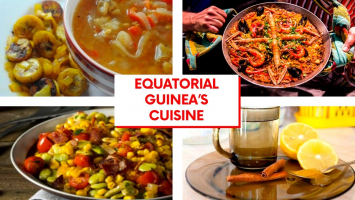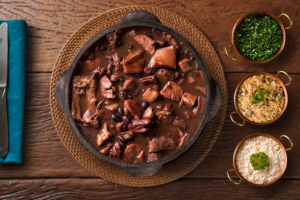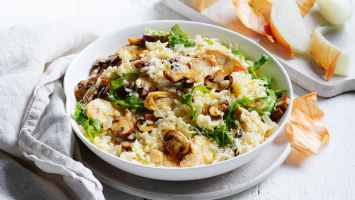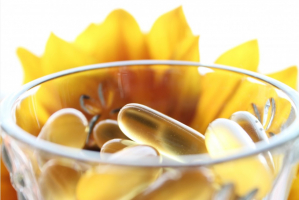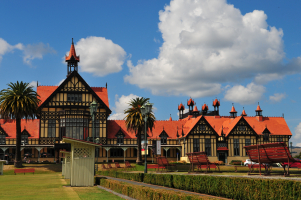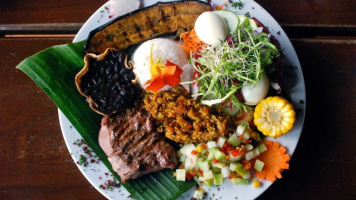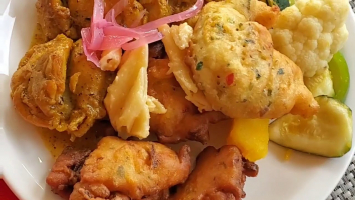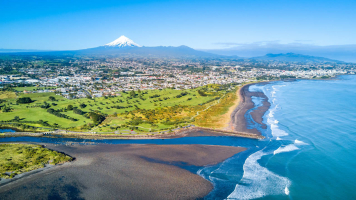Top 7 Best Foods In New Zealand - With Recipes
Trying the local cuisine is an important aspect of traveling, so why not taste some of New Zealand's famous cuisine while you are there? New Zealand is not ... read more...known for its cuisine, but there are several dishes, snacks, desserts, and even drinks that Kiwis are pleased to claim as their own. So, what dishes from New Zealand are worth trying? Toplist's collection of New Zealand's famous foods will give you a sense of the country's culinary culture.
-
New Zealanders love pies! The meat pie is well-known in New Zealand as part of the country's signature cuisine.
Every year, the Bakers New Zealand Supreme Pie Awards are held in New Zealand when the country's greatest bakers vie for the title of best pie.
Pies are a great way to warm up your stomach on any occasion. They are commonly eaten at any time of day and are frequently used as a snack or filler in between meals.
Ingredients:
- 60 ml (¼ cup) vegetable oil; 500 gm minced beef; 1 onion, finely chopped; 2 garlic cloves, very finely chopped; 7 gm sea salt flakes; 20 gm cornflour; 2 kg butter puff pastry (see note);1 egg, lightly beaten; 120 gm coarsely grated cheddar
- Rich beef stock: 1/2 tbsp vegetable oil; 300 gm beef scraps (see note), cut into cubes; 100 gm piece of belly bacon, cut into 3cm cubes; 1 onion, unpeeled, thinly sliced; 5 garlic cloves, unpeeled, halved; 6 thyme sprigs; 3 fresh bay leaves; 1 tsp black peppercorns; 65 ml brandy; 65 ml Worcestershire sauce; 1.5 liters butcher-quality chicken stock
Instructions:
- For rich beef stock, heat a stockpot over high heat, add oil, then add beef and bacon, and brown well on all sides, scraping often to keep from catching on the bottom of the pan. Deglaze the pan with brandy and Worcestershire sauce, scraping the base of the pan, and reduce until liquid is almost evaporated. Add remaining stock and simmer over low heat until well flavored.
- Heat oil in a large saucepan over high heat, add minced beef, and stir occasionally until cooked through, then drain in a sieve, reserving 1½ tbsp of fat. Return reserved fat to the pan, add onion and garlic and sauté until tender, then add beef, rich beef stock, and salt and bring to a boil. Meanwhile, stir cornflour and 25ml cold water in a small bowl until smooth, add to beef mixture and stir continuously until sauce thickens, remove from heat and cool completely
- Roll out pastry on a lightly floured surface to 4mm thick. Cut out twelve 8.5cm rounds and twelve 13cm rounds from pastry. Top with remaining pastry rounds, press edges together to seal, and crimp with a fork.
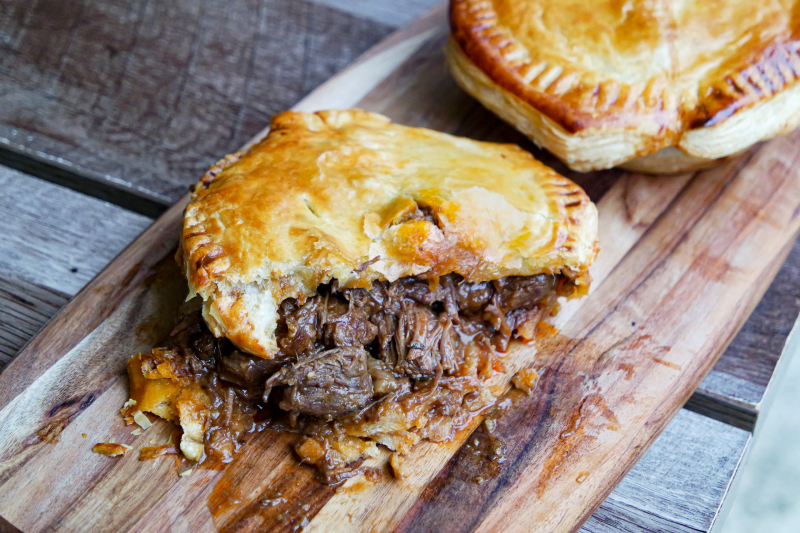
jesspryles.com 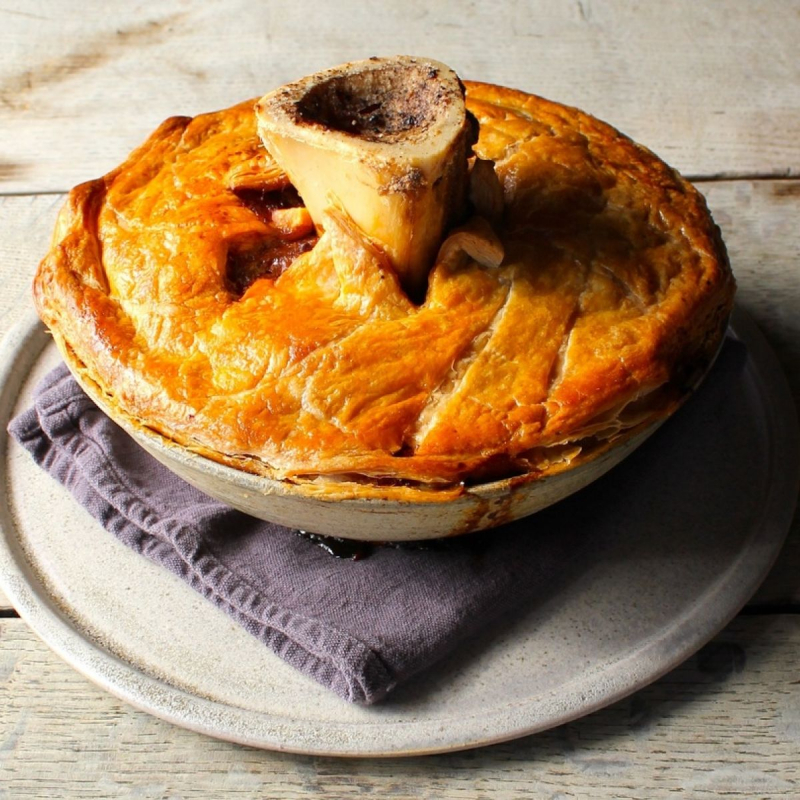
The Irish Times -
The next dish is a quite popular dish. Maybe you already know the world-famous burger fast food. But in New Zealand, the Kiwi Burger is something different.
The Kiwi Burger was originally created by the McDonald's Franchise for kiwis and it consisted of a four-ounce beef patty, fried egg, beetroot, tomato, lettuce, cheese, onions, mustard & ketchup. Not many foods get their own theme song! But the Kiwi Burger did!
Ingredients:
- Burger patties: 500 g prime beef mince; 1 Tbsp olive oil; 1 Tbsp Worcestershire sauce; 1 tsp garlic powder
- Burger sauce: 1/4 cup aioli; 3 Tbsp tomato sauce; 1 tsp Dijon mustard; 1/2 tsp garlic powder; 1/4 tsp Worcestershire sauce
Instructions:
- Prepare patties: Place mince, oil, Worcestershire sauce, garlic powder, salt, and pepper in a large bowl. Using your hands, gently mix until well combined. Divide into four pieces and shape into patties approximately 1cm / 0.4in thick. Use your thumb to press a dent into one side.
- Make burger sauce: Whisk all sauce ingredients together in a small bowl and season to taste with salt and pepper.
- Prepare serving ingredients: Thinly slice onion and tomato.
- Make burgers: Heat a large frying pan on medium-high. Add burger patties and cook for 4-5 minutes (don’t press down on them). Flip and cook for a further 3-4 minutes, until cooked through. Transfer to a board, cover with foil, and leave to rest.
- Spray pan lightly with cooking oil spray and crack eggs into pan to fry, leaving a space to cook the onion - use egg rings to keep them nice and tidy if you like. Add onion. Cook eggs to your liking and onion until soft. Season with a little salt and pepper.
- Cut burger buns in half and lightly toast. Spread each side with burger sauce. Top the bottom with a slice of cheese, burger patty, egg, tomato, onions, beetroot and lettuce. Add top half of the bun and microwave assembled burgers for 10-15 seconds.
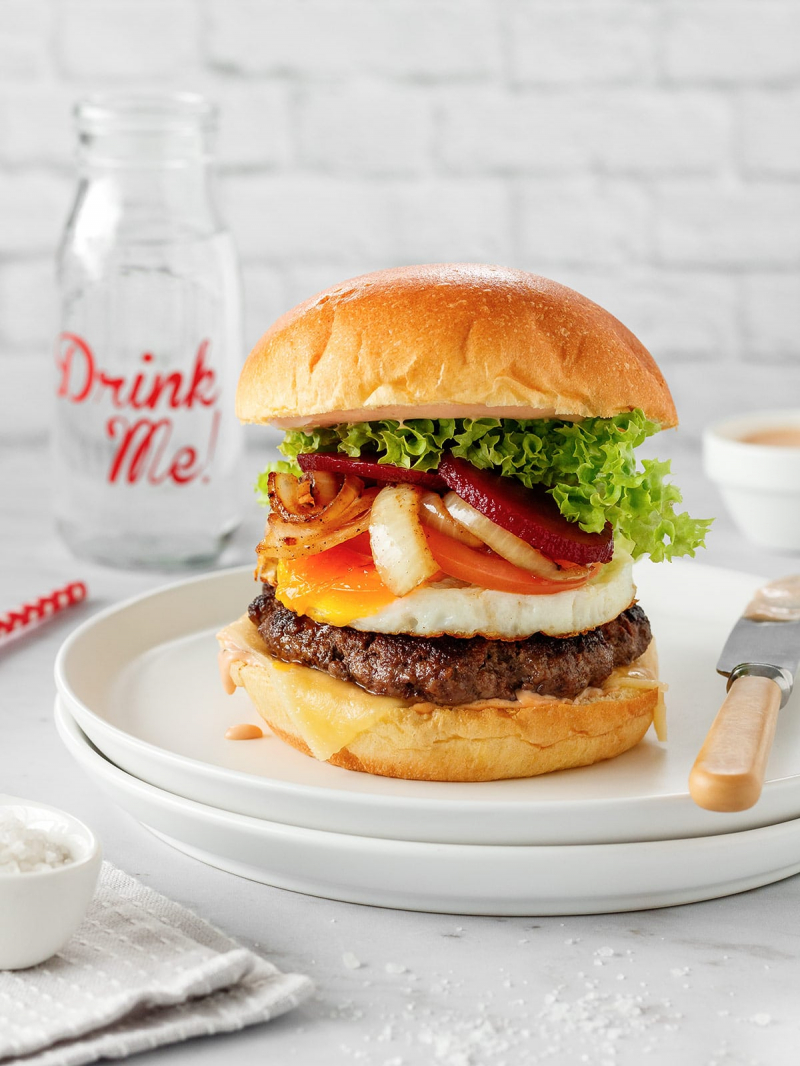
Your Ultimate Menu -
Fish and Chips are another great traditional New Zealand food. It began in London and quickly came to New Zealand with shores having an abundance of the best seafood in the world.
It consists of fresh fish, coated in a crispy batter then deep-fried, along with a generous serving of hot chips. You can find fish and chips in almost every town in New Zealand. This takeaway meal is usually accompanied by fresh white bread and tomato sauce. You will find fish and chips on most restaurant menus too, usually served with seasonal salad. It is so amazing when sitting by the beach on a balmy summer evening with fish and chips.
Ingredients
- Fish
6 gurnard fillets; 1 cup self-raising flour; 1/2 tsp salt; 1/2 cup water; 1/2 cup milk; Canola oil for deep frying
- Chips
8-10 large Agria potatoes (or any floury potato); 3-4 tbsp olive oil; 1 tbsp chicken salt
Instructions:
- Preheat oven to 250c.
- Slice the potatoes lengthwise into 3-4 1cm thick slices. Then cut each slice into 2-3 1cm chips.
- Bring a large pot of water to a boil. Add the chips, and blanch in the boiling water for 3 minutes.
- Drain the water, then leave the chips to drain on a tea towel.
- Lay them in a single layer on a large roasting tray. Drizzle liberally with olive oil, then sprinkle over chicken salt. Toss to coat.
- Bake in the hot oven for 20-25 minutes, or until golden brown and crispy. Turn the chips twice during cooking.
- Add at least 5cm of canola oil to a high-sided, heavy saucepan, and heat on the stovetop on high heat.
- Lightly dust the fish fillets in a little flour to coat.
- Add the self-raising flour and salt to a bowl. Mix the milk and water together, then gradually beat into the flour. Keep adding in the water/milk mixture until the batter is about piklet batter consistency.
- Test how hot your oil is. Add a drop of batter and it should hit the oil and bubble instantly. If the oil begins to smoke, it's too hot, remove from the heat straight away.
- Drag fillets through the batter to coat, then fry in the hot oil, 2-3 fillets at a time.
Fry for around 2 minutes, then flip, and fry for another 2 minutes, or until golden and crispy. - Drain the fillets on each side on paper towels as you fry the rest. Pop them onto baking paper in a warming oven, if you have one.
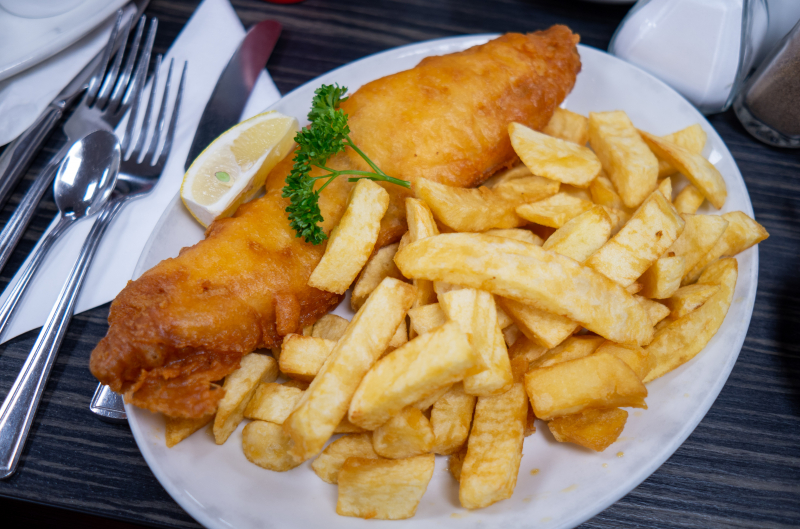
Matthias Meckel 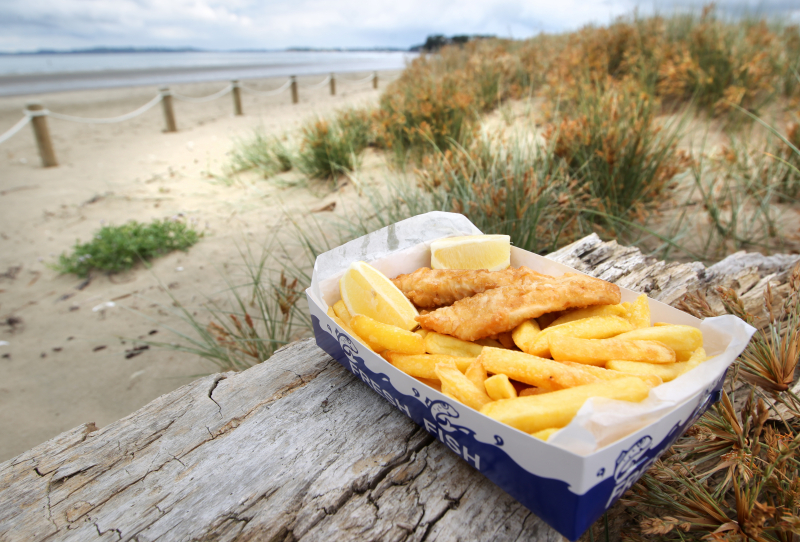
NZ Herald - Fish
-
Kina, or Evechinus chloroticus, is a sea urchin found off the coasts of New Zealand. It has a spiky exterior and some thin delicious meat inside. This local sea urchin has been a delicacy for centuries making it one of the oldest traditional foods in New Zealand. And it is easily available throughout New Zealand and can be bought at the local fish market.
Kina has a briny, creamy flavor that is an acquired taste for many people. If you have never had Kina before just think of it as a spiky oyster – eat it raw, slurp it in and enjoy the taste. To eat kina, you’ll have to remove edible parts from the inside of the urchin and properly clean it first. Kina is traditionally served raw, deep-fried, or in a pie. There are also other ways that you can add it to food that you regularly eat to enhance the dish's flavor. And Toplist will introduce to you a way to cook fried Kina.Ingredients:
- 1 cup (450 g) of kina tongues; 1 cup (120 g) of flour; 1 teaspoon (4 g) of baking powder; 1 teaspoon (4 g) of salt; 1 teaspoon (4 g) of pepper; 1/2 cup (125 ml) of milk; 1 egg
Instructions:
- Pour the flour, baking powder, salt, and pepper into a bowl. Mix 1 cup (120 g) of flour with 1 teaspoon (4 g) baking powder. A teaspoon (4 g) of salt and pepper will add more flavor to the batter. Pour the dry ingredients into a bowl and use a fork to mix the ingredients together.
- Mix 1/2 cup (125 ml) of milk and one egg into the bowl. Crack an egg over the bowl and then use a fork to whisk the egg into the dry ingredients. Then, measure 1/2 cup (125 ml) of milk and pour it into the bowl. Continue to mix the batter together until it forms a paste-like consistency.
- Fill a pot ⅓ of the way with vegetable oil. Use a deep and heavy cast iron or stainless steel pot to fry your urchin. If you have a deep fryer, you can use that as well. You can also use other cooking oils with a high smoke point, such as canola oil, grapeseed oil, or lard.
- Bring the oil to 350 °F (177 °C). Turn the burners on and use a cooking thermometer to ensure that the temperature of the oil is 350 °F (177 °C). If the oil is cooler than this, your kina will come out soggy. If the temperature is too high, your kina will burn.
- Coat the kina in the batter. Dip the kina into the batter with a slotted spoon or tongs so that there's an even layer coating it.
- Dip the kina into the hot oil. Carefully put the kina into the hot oil with a pair of tongs or a slotted spoon. When the kina is submerged, the oil should start to bubble. Continue to cook the kina until they are golden brown. This usually takes 10-15 minutes.
- Remove the kina from the pot and let them drain on paper towels. Remove the fried pieces of kina with a slotted spoon or tongs and place them on a plate lined with paper towels. Let the kina sit for 5-10 minutes before serving them. They will be very hot when you first take them out of the oil.
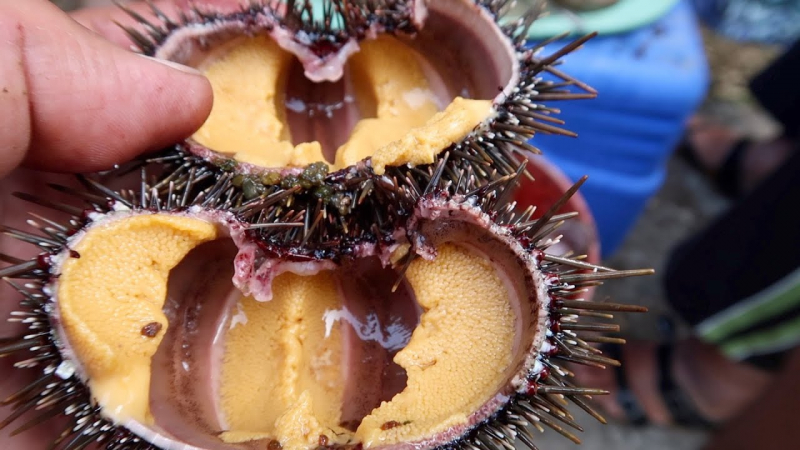
Weka Digital Media NZ 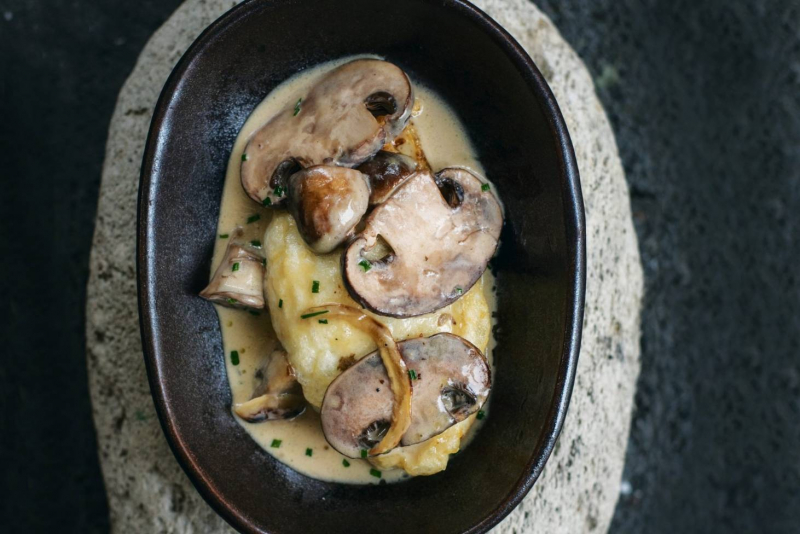
Fried kina with creamed button mushrooms (Source: atuff.co.nz) -
Ask an Australian and they will swear that Oz invented the pavlova. Ask a Kiwi and they will tell you differently. Either way, pavlova is a much-loved dessert in New Zealand made with meringue, whipped cream, and fresh fruit. While this dessert can be found on the odd dessert menu in New Zealand, Kiwis traditionally consume this refreshing dessert for Christmas.
Pavlova is on the dessert menu of many New Zealand restaurants, including Cibo in Auckland, Public Kitchen, and Bar in Queenstown, and Floriditas in Wellington.
Ingredients:
- 3 – egg whites; 3 tablespoons – cold water; 1 cup – caster sugar; 1 teaspoon – vinegar; 1 teaspoon – vanilla essence; 3 teaspoons – cornflour; 300 ml (1.3 cups) – cream (whipped); 4 – kiwifruit
Instructions:
- Preheat oven to 150ºC (300ºF).
- Beat egg whites until stiff. (FYI: it is so much easier with an electric whisk).
- Add water and beat again.
- Add sugar very gradually while still beating.
- Add vinegar, vanilla essence, and cornflour while still beating.
- You can finally stop beating and line an oven tray with baking paper.
- Draw a 22cm (8-9″) circle on the baking paper and spread the pavlova mix to within 2cm (0.8″) of the edge of the circle, keeping the shape as round as possible.
- Smooth the top surface.
- Bake the pavlova for 45 minutes.
- Leave to cool in the oven.
- Carefully lift the pavlova onto a serving dish and decorate with whipped cream and kiwifruit.
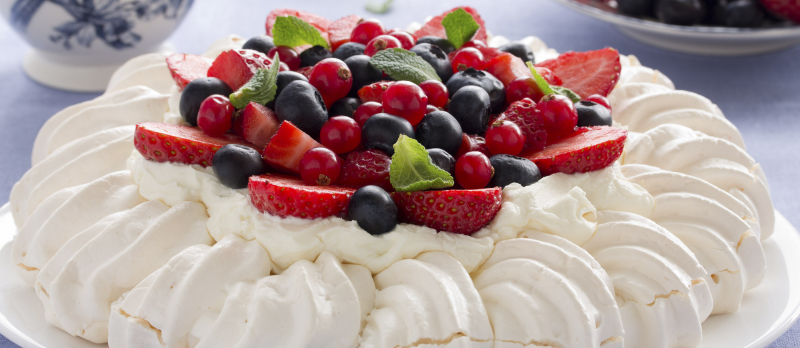
tasteatlas.com 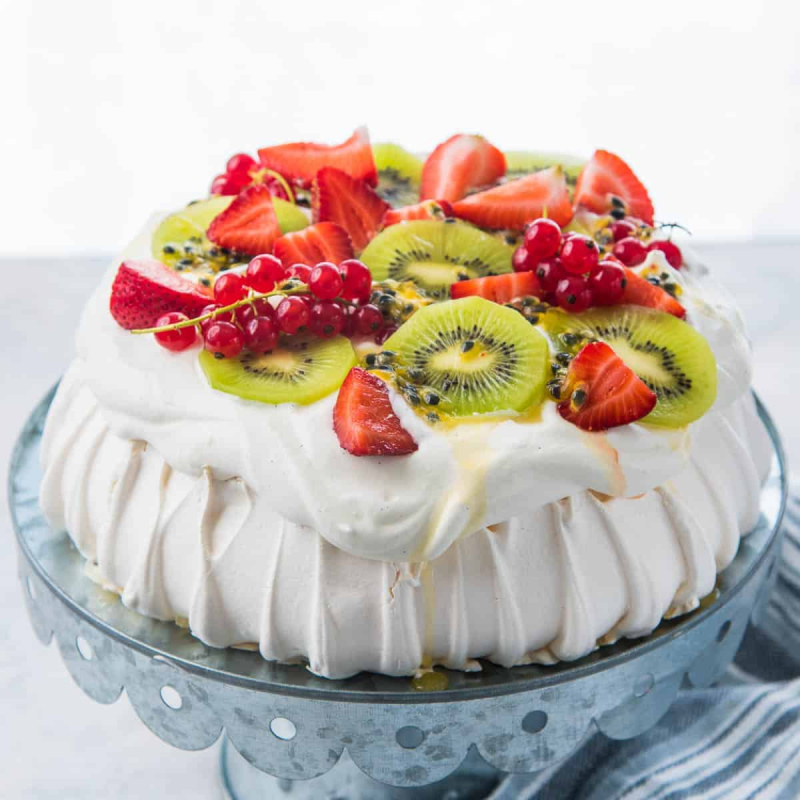
The Plavor Bender -
New Zealand Lamb holds a very high reputation around the world as it is the most exported meat in the country. In the month of February 2019 lamb exports alone totaled $319 million.
If you appreciate high-quality tasting meat, treat yourself to a lamb shank next time you are in New Zealand, you will not regret it!Ingredients:
1 teaspoon salt; 3/4 teaspoon pepper; 4 lamb shanks (about 20 ounces each); 1 tablespoon butter; 1/2 cup white wine; 3 medium parsnips, peeled and cut into 1-inch chunks; 2 large carrots, peeled and cut into 1-inch chunks; 2 medium turnips, peeled and cut into 1-inch chunks; 2 large tomatoes, chopped; 1 large onion, chopped; 4 garlic cloves, minced; 2 cups beef broth; 1 package (10 ounces) frozen peas, thawed; 1/3 cup chopped fresh parsley; 2 tablespoons minced fresh rosemary
Instructions:
- Rub salt and pepper over lamb. In a large skillet, heat butter over medium-high heat; brown meat. Transfer meat to a 6- or 7-qt. slow cooker. Add wine to skillet; cook and stir 1 minute to loosen brown bits. Pour over lamb. Add the parsnips, carrots, turnips, tomatoes, onion, garlic, and broth. Cook, covered, on low 6-8 hours or until meat is tender.
- Remove lamb; keep warm. Stir in peas, parsley, and rosemary; heat through. Serve lamb with vegetables.
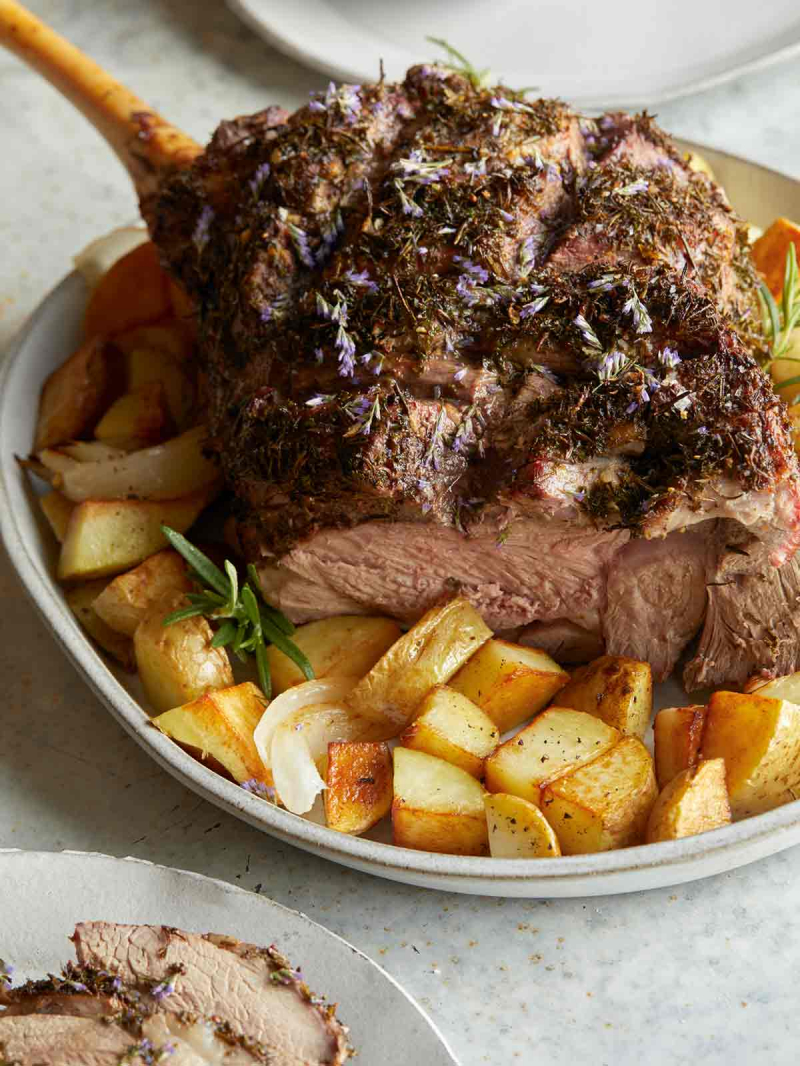
spoonforbacon.com 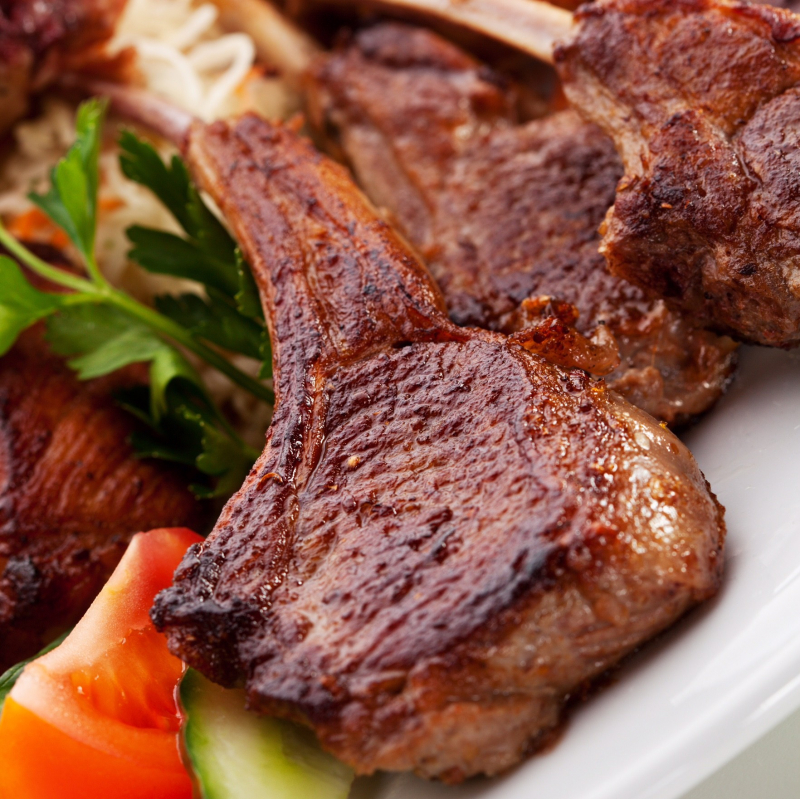
jettfoods.com - Rub salt and pepper over lamb. In a large skillet, heat butter over medium-high heat; brown meat. Transfer meat to a 6- or 7-qt. slow cooker. Add wine to skillet; cook and stir 1 minute to loosen brown bits. Pour over lamb. Add the parsnips, carrots, turnips, tomatoes, onion, garlic, and broth. Cook, covered, on low 6-8 hours or until meat is tender.
-
The origins of the Anzac cookies may be traced back to World War One. The acronym ANZAC stands for Australian and New Zealand Army Corps.
During World War 1, wives and women's organisations delivered Anzac cookies to soldiers serving overseas. Unlike other foods, such as bread, which is mushy and turns mouldy rapidly, the components do not deteriorate readily and are extremely resilient.
The biscuits are so long-lasting that troops are claimed to have written messages on them and sent them far distances to friends and family.
And today these cookies have been produced more and appear on the supermarket shelves of New Zealand, especially Amazon so you can also buy them online.Ingredients:
85g porridge oat; 85g desiccated coconut; 100g plain flour; 100g caster sugar; 100g butter, plus extra butter for greasing; 1 tbsp golden syrup; 1 tsp bicarbonate of soda
Instructions:
- Heat oven to 180C/fan 160C/gas 4. Put the oats, coconut, flour and sugar in a bowl. Melt the butter in a small pan and stir in the golden syrup. Add the bicarbonate of soda to 2 tbsp boiling water, then stir into the golden syrup and butter mixture.
- Make a well in the middle of the dry ingredients and pour in the butter and golden syrup mixture. Stir gently to incorporate the dry ingredients.
- Put dessertspoonfuls of the mixture on to buttered baking sheets, about 2.5cm/1in apart to allow room for spreading. Bake in batches for 8-10 mins until golden. Transfer to a wire rack to cool.
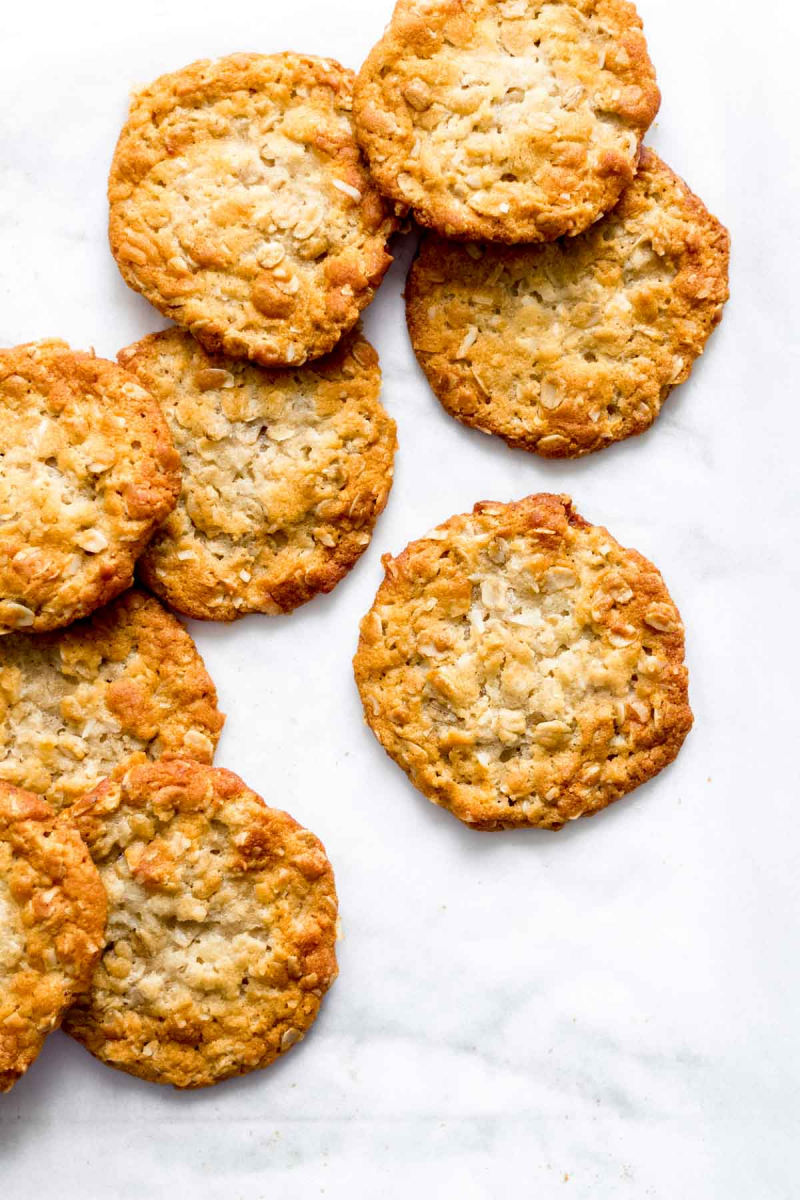
Katiebird Bakes 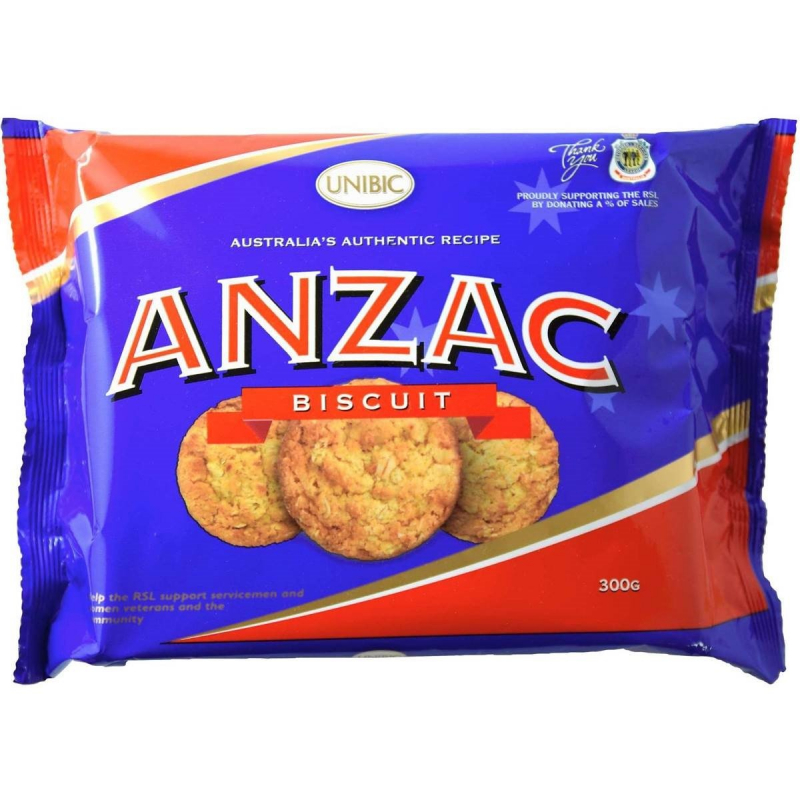
Fado









